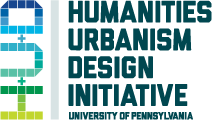News
Towards an Urban Future: Density and Development in Postwar America
In the second half of the twentieth century, American cities seemed to be both shrinking and expanding. After World War II, many cities “hollowed out,” losing people, industry, and political power. But as a largely white, largely middle class population migrated from city centers to outlying areas, metropolitan orbits distended. The rise of urban agglomerations suggested that America was becoming an increasingly urbanized nation and that Americans were becoming an increasingly urban people. From any vantage point, the definition of “city” as a densely settled, highly centralized, and clearly delimited place no longer seemed appropriate. The meaning of “urban-ness” was changing.
 This project tracks the evolving meaning of “urban” and “urbanization” from WWII through the early 1970s. My three driving questions are: 1) How and why did urban-ness come to adhere to people as well as spaces in the second half of the twentieth century, and how did this relate to popular and scholarly conceptions of progress, development, and modernization? 2) How could the depopulation of urban cores and the perception of an “urban crisis” coexist with widespread anxiety that metropolitan expansion, over-urbanization, and megalopilization might lead to a dystopian urban future in the United States? 3) How did these fears about an urban future inspire policies and projects that sought to reinstate the physical and conceptual boundary between “urban” and “rural” space?
This project tracks the evolving meaning of “urban” and “urbanization” from WWII through the early 1970s. My three driving questions are: 1) How and why did urban-ness come to adhere to people as well as spaces in the second half of the twentieth century, and how did this relate to popular and scholarly conceptions of progress, development, and modernization? 2) How could the depopulation of urban cores and the perception of an “urban crisis” coexist with widespread anxiety that metropolitan expansion, over-urbanization, and megalopilization might lead to a dystopian urban future in the United States? 3) How did these fears about an urban future inspire policies and projects that sought to reinstate the physical and conceptual boundary between “urban” and “rural” space?
Part I of this study explores the dissolution of traditional boundaries between urban and rural spaces and the evolution of new definitions of “urban-ness” in the immediate postwar. Part II looks at policies and projects that opposed this taxonomical shift. Such policies and projects, I argue, sought to restore conventional understandings of urban space through reinvigorating city centers and by inventing the problem of and subsequently trying to contain “urban sprawl.”
